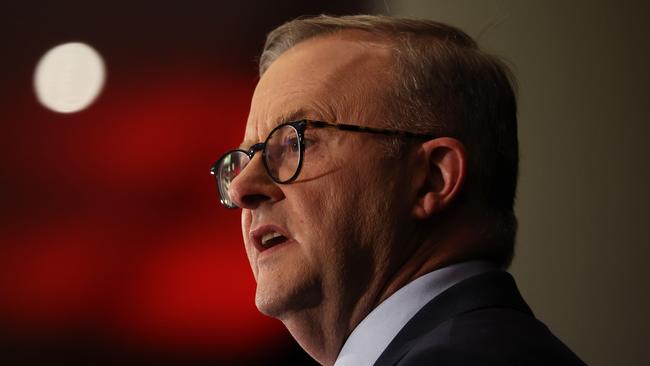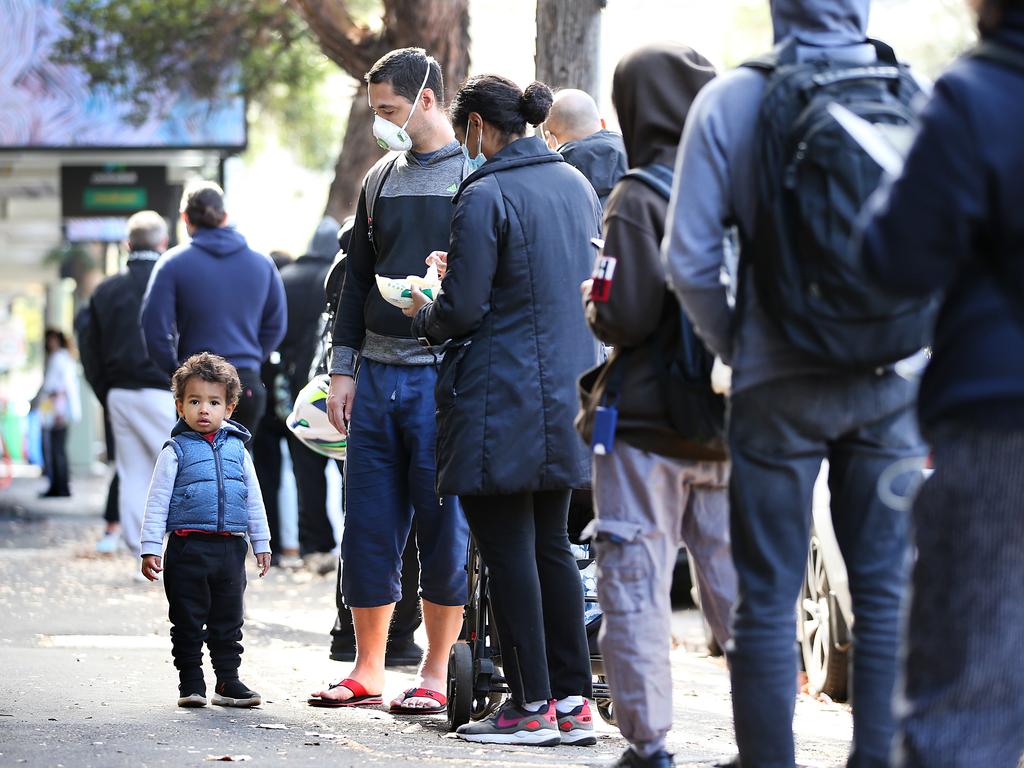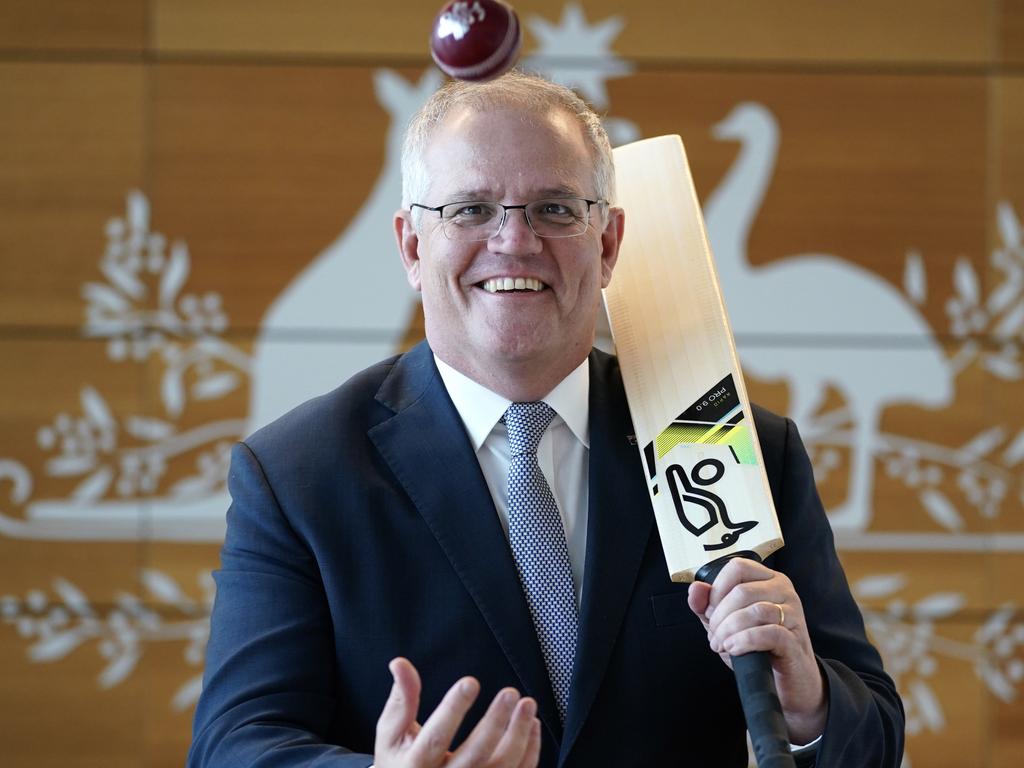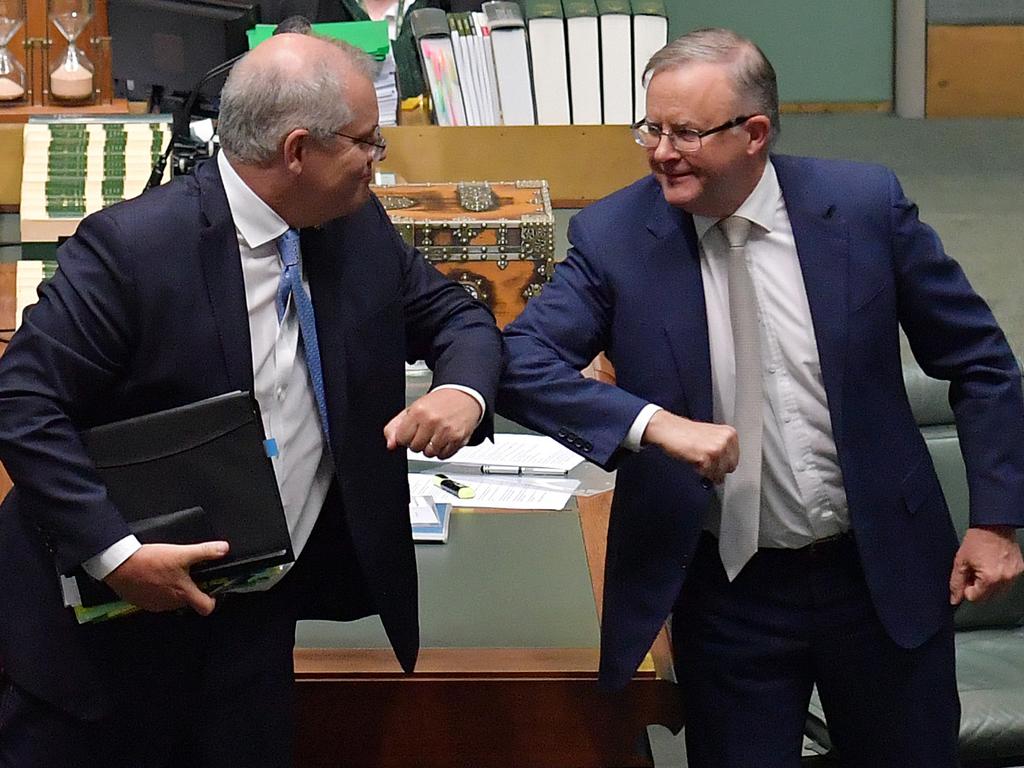Election 2022: All the pressure’s on Labor to recapture its shifting heartland
Anthony Albanese knows this is a must-win election to rekindle the ALP’s mission as a governing party.

This would make a dispiriting record even worse. It would shatter Labor’s confidence, self-belief and, possibly, unity. It would constitute a body blow for a generation of Labor politicians who served as senior ministers in the Rudd-Gillard era and are seeking another chance to redeem their generation and rekindle Labor’s mission as a governing party.
Defeat would become a generational failure. It would be cruel in its complexity since it would mean Labor had failed twice trying different strategies.
In 2019, it lost under Bill Shorten waging an ambitious class warfare, big tax, big government, high redistribution campaign; while Anthony Albanese, recognising that failure, has pursued a small target, policy careful, pragmatic approach based on the premise that Labor’s goal is to form government not parade its ideological credentials.
If Albanese loses, Labor faces a dangerous strategic cul-de-sac. Where does it go next? It would affirm its status as a competitive loser, always threatening, rarely succeeding. A party strong at state level, weak at national level.
Where would Labor go having failed in 2019 on high ambition and in 2022 on high electoral expediency? Senior ALP figures dismiss these three terms of Liberal-National Coalition since 2013 as politically chaotic and policy weak, yet what judgment will that invite of Labor if it loses yet a fourth election in this era?
Central to these concerns is Labor’s core standing with the Australian people. Aware the public wants a better life but no major change, Labor’s 2022 tactic is to run a negative referendum on the Morrison government. A win is a win is a win – but any Labor win is likely to be more about the public’s distrust of Scott Morrison than confidence in Labor, which is a risky foundation for office.
Yet victory always offers the tonic for renewal. An Albanese victory gives Labor the chance to rekindle from the Treasury benches in a post-Covid era of economic reconstruction, hi-tech adaptation and strategic challenge – but only a far tougher ALP could succeed in office, and that means a caucus and a rank and file ready to ditch a lot of its ideological darlings.
A win would signal a reversal in Labor’s primary vote decline, an imperative for renewal. Under Shorten, the primary vote sank to 33.3 per cent, signalling 10 years of dismal primary votes. Amid a climate of disillusionment and distrust of the major parties, Labor must achieve a degree of cut-through by persuading voters that if they are sick of Morrison, then they must take action: vote Labor, and don’t fiddle with independents and fringe parties.
A victory for Morrison means he would be the first prime minister since John Howard to be re-elected. So this election will determine whether the entrenched instability and lack of confidence in leadership that has plagued our politics in the 14 years since 2007 will continue, or whether the cycle is broken.
If Morrison is defeated, that would be five successive PMs who have failed to be re-elected. What would that say about our governance, our major parties and our public culture? Indeed, Morrison is the only one of the five to have survived to actually contest re-election. The others – Kevin Rudd, Julia Gillard, Tony Abbott and Malcolm Turnbull – were terminated by their partyroom before their re-election poll.
Nothing better illustrates the dominance of short-term electoral politics, the tyranny of the polls, the power of negative campaigns, and fractures within the major parties – all entrenched factors that work against national interest policy. Most of the debate about the flaws in our democracy ignores the big structural problems.
Morrison is plagued by the centrifugal crisis of the centre-right. The Liberals confront a smash-up on both sides: on its populist conservative side, Clive Palmer, Pauline Hanson, Campbell Newman and others tempt the disillusioned conservatives to defect; while on its progressive wing, Simon Holmes a Court boasts he has $20m to finance climate change independents running against sitting government MPs in once safe Liberal seats.
While the mercurial Palmer with his vast pockets is prone to changing his mind, his hypocrisy pales besides Holmes a Court who laughably calls himself a “Menzian Liberal” but recruits only against Liberal members. His agenda seems to span climate action, a national integrity commission and justice for women – pretty much the ALP agenda – appealing to snobs who want progressive action but cannot stomach voting Labor.
Any Morrison victory will constitute another “miracle” given the structural forces against him: the Coalition primary vote will fall from 2019; Morrison is less popular; Labor is a lesser target; the fourth term is tougher than the third; and hostile ALP premiers lie in wait.
But any Morrison win must demand a re-set on how this country debates policy and politics, given it could occur only as a result of voters as “outsiders” repudiating the “insiders” media narrative with its relentless depiction of Morrison as a deceptive, untrustworthy leader who doesn’t deserve to be re-elected.
The risk is that election 2022 delivers a minority government. That would be a blunder for the nation. It would come at the cost of resolute government and sound policy. How do we know this? Because we have the example of the disastrous Gillard minority government, the only minority government since World War II.
Minority government devoured Gillard in political terms. Her main adviser, John McTernan, said to me: “All the flack of minority government was sucked into her prime ministership because she was so central to the deals and maintaining the deals. In my view, minority government was hugely damaging for her.”
With Coalition and Labor both suffering voter distrust, stronger support for minor parties and independents is expected – lifting the prospect of a minority government in 2022 under either Morrison or Albanese.
This is the cult of protest reinforced by the rise of localism. Covid has made voters more influenced by their immediate situation and daily lives. It means a renewed emphasis on “all politics is local” – each seat will be guided by its own mood, imposing its local twist on the national trend.
An election where neither side has the numbers means a bidding competition for the independents. In 2010, Gillard formed government in an alliance with the Greens and independents from Coalition-inclined constituencies, notably Tony Windsor and Rob Oakeshott who refused to contest the subsequent poll and accept responsibility for their decision.
The Labor brand was fatally damaged by a formal alliance with the Greens leading to the carbon pricing policy. Albanese has learnt from history. He won’t repeat Gillard’s blunder. He won’t enter an alliance with the Greens because he knows the Greens have nowhere else to go. As Greg Combet said of the Gillard minority government when it was over: “The problem is the community felt we were running agendas that were not own.”
History tells us that independents and minor parties have no superior morality than other politicians. The voting record in the Senate shows how, when given a balance of power, they invariably horse-trade on behalf of the sectional interest at the cost of the national interest.
In the coming election, the voting record of all the independents in the House should be put on the public table in the cause of transparency and accountability, allowing the public to assess how they voted and where their allegiances lie.
For Albanese, the election will determine whether voters see his changes as cosmetic or real. This may become the pivotal 2022 election issue.
Can Labor prevail without a popular messiah at the helm – without a Whitlam, Hawke or even a Rudd? We know Albanese is changing Labor’s face, its language and its shop front – but is he changing the party’s convictions and substance and what has kept it sidelined for so long?
Is the Albanese ALP makeover genuine or cosmetic?
Is it just a tactical con job to fool enough people to win an election?
Albanese’s task is to keep the ALP loyalists – the public servants, the youth vote, the climate believers, trade unionists, the working families, health, education and community workers, the tertiary progressives – but march back to the political centre and persuade the legions of waverers waiting to be gathered up. His job, above all, is to disprove the Tony Blair thesis as it applies to Australia.
In his May 2021 New Statesman article, Blair identified the crisis of contemporary social democratic parties; in economic terms, they had become agents of the Big State, and in cultural terms they had become agents of extreme identity with its “voter-repellent” consequences.
Blair asked: what happened to Francois Mitterrand’s Socialist Party, or Willy Brand’s SPD, or UK Labour that has now lost four elections on the trot? He warned Joe Biden’s success might be short-lived.
“People do not like their country, their flag or their history being disrespected,” Blair wrote. He warned that progressives were caught between outdated economic ideology and misleading new cultural currents, when they really needed to find fresh policies for a technological age.
“Keeping your head down isn’t a strategy” he wrote, adding that British Labour needed “total deconstruction and reconstruction”.
Australian Labor is not plagued with the same crisis as British Labour. Blair said people want balance and reason, and that’s where Albanese is heading. Labor must avoid the Blair trap – the Big State and cultural wokism.
Yet the ALP post-2013 made the mistake of going too progressive, bearing in mind the progressive mission is to change the cultural values that underpin society and its institutions. The upshot is Labor had great trouble talking to tradies and miners, regional voters, people of faith, ordinary non-ideological Australians, virtually all conservatives, and people worried about the economic and cultural changes Labor wanted to impose on the country – hence a collapsed primary vote.
The review of Labor’s 2019 defeat conducted by former minister Craig Emerson and former South Australian premier Jay Weatherill in effect confirmed Labor as a party of dual identities – it is the champion of high-educated, high-earning cosmopolitans focused on climate, inclusion and social justice and it is the party of traditional, low- to middle-income workers in the suburbs and regions.
This duality is Labor’s strength and weakness. Albanese’s future as leader depends upon making this duality work in the election, and in office if he prevails. That means convincing people Labor’s priority is jobs and the economy. Working people want to see Labor focused on the issues that matter to them – jobs at a time of technological change, economic security amid disruption, and health in a pandemic age. The media will endlessly promote climate change but this is unlikely to be a frontline election issue.
The upshot is Albanese’s tactic of reassurance. He wants to bring the country together in a Bob Hawke-type unity pitch. He has ditched the tax/spend framing. He backs the government’s personal income tax cuts, its AUKUS nuclear submarine deal, and its hard line on China, and he prioritises childcare for working mothers. The question becomes: will the voters buy Albanese as an agent of “safe change” or will the voters remain too suspicious of the Labor brand?
Much depends upon Morrison. Can he recover his composure, because his 2022 prospects hinge upon resurrecting the assurance he displayed in 2019? That means recreating his fusion of economic management superiority and projection of values for mainstream Australia. It is this fusion that matters. The values are aspiration versus entitlement, incentive versus redistribution, individual opportunity versus state power.
The government’s economic strength is not just about “who do you trust with the economy?” It is about what sort of economy – jobs, tax system, opportunity and service delivery you provide – including wage growth, where the government is vulnerable.
Supply-side shortages are emerging fast and will figure in the election. Morrison’s economic record during the pandemic and the strong 2022 recovery must give him a real hope of re-election – but that depends upon restoring his personal image and credibility.







The coming federal election will reshape Australian history – it is an election far more important for Labor than the Coalition since defeat for Labor will be devastating, its fourth successive loss consigning it to a lamentable one majority government win from the previous 10 federal elections.